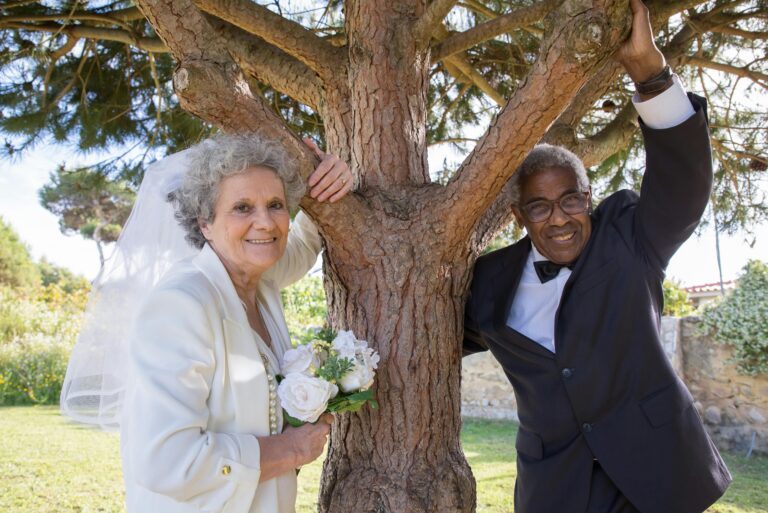The Role of Love Languages in Building Strong Relationships
Love languages play a crucial role in building strong relationships by helping partners understand each other’s emotional needs. They foster communication and deepen emotional bonds.
Love languages, a concept popularized by Dr. Gary Chapman, refer to the different ways people express and receive love. The five love languages are words of affirmation, acts of service, receiving gifts, quality time, and physical touch. Understanding your partner’s love language can significantly enhance your relationship.
It allows you to meet their emotional needs more effectively, creating a deeper connection. Couples who communicate using their partner’s love language often experience higher satisfaction and intimacy. By recognizing and speaking each other’s love language, partners can build a stronger, more resilient relationship. This understanding fosters empathy, reduces misunderstandings, and strengthens emotional bonds.
The Essence Of Love Languages
Love languages help us understand how to express love. There are five main love languages. These are Words of Affirmation, Acts of Service, Receiving Gifts, Quality Time, and Physical Touch. Each person has a primary love language. Knowing your partner’s love language is important. It helps in showing love in a way they understand.
Dr. Gary Chapman introduced the concept of love languages. He wrote a book about it in 1992. Many people found it helpful. Love languages can improve relationships. They help partners feel valued and understood. Understanding love languages can reduce conflicts. It brings couples closer together. This can build a stronger bond.
Deciphering Your Own Love Language
Think about what makes you feel loved. Is it kind words or thoughtful gifts? Notice what actions make you happiest. Pay attention to how you show love to others. This can offer clues. Take online quizzes to help identify your love language. Reflect on your childhood. How did your family express love? These memories can guide you.
Review past relationships to find patterns. What gestures made you feel special? Did any actions upset you? Recall moments that brought you closer to someone. Were they doing something specific? Look at arguments. What were the common issues? Understanding these can reveal your love language. Compare different relationships. Notice any recurring themes. This helps in understanding your emotional needs.
Communicating Your Needs To Your Partner
Using effective dialogue strategies can improve understanding. Start with simple and clear sentences. Always listen before responding. It’s important to express feelings honestly. Avoid blaming words. Use “I feel” statements. This helps in sharing emotions without conflict. Body language is also key. Make sure it matches your words. Eye contact shows you are engaged. Nod to show you understand. Repeat back what you heard. This shows you listen well.
Creating a safe space helps in sharing. Make sure both feel comfortable. Trust is very important. Share small secrets first. Build up to bigger ones. Be patient with each other. Take turns speaking. Respect each other’s feelings. Encourage each other to open up. Show empathy and understanding. This builds a strong bond.
Learning Your Partner’s Love Language
Pay attention to your partner’s words and actions. Notice how they express love. They may show love through kind words or small gifts. Watch for what makes them happy. Listen to their stories and experiences. This can give you clues about their love language. Body language is also important. A smile or a hug can mean a lot. Try to be present and fully engaged in conversations.
Ask your partner about their favorite ways to feel loved. Questions like “What makes you feel special?” can help. You can also ask, “What is your favorite thing I do for you?” These questions help you understand their love language. Be sure to listen carefully to their answers. This shows you care and want to make them happy.
The Interplay Of Different Love Languages
People have different love languages. Sometimes, these differences can cause confusion. Imagine one person likes words of affirmation and the other prefers acts of service. It can be hard to understand each other’s needs. Learning about your partner’s love language helps a lot. This can lead to better communication. It also makes the relationship stronger. Try to show love in the way your partner understands best. It can make both of you much happier.
Find a common ground in your love languages. You can create a mix of both languages. This helps in making each other feel loved. Talk about what you both need. Find ways to meet those needs together. Compromise is key. This approach builds a strong bond. It also makes the relationship more harmonious. Always remember, understanding and effort go a long way.
Love Languages In Daily Life
Love languages are ways people show and receive love. Small acts can mean a lot. A hug or a kind word can brighten someone’s day. Doing chores can show you care. Gifts can make someone feel special. Spending time together builds strong bonds. Even a simple touch can show love.
Love languages help keep love alive. Knowing your partner’s love language is key. Always try to speak their love language. This makes them feel loved and valued. Communicate openly about what you need. Listen to what they need, too. Small efforts every day can make a big difference. Remember, love is a two-way street.
Challenges And Misunderstandings
People often have different love languages. This can lead to misunderstandings. One person may prefer words of affirmation. Another might value acts of service more. These differences can create tension. Each person feels unloved in their own way. They may misinterpret actions and words. This can hurt feelings.
Communication is very important. Share your love language with your partner. Listen to their needs as well. Try to understand their perspective. Make an effort to speak their love language. This helps build stronger bonds. Patience and empathy are key. Remember, everyone shows love in different ways. Respect each other’s differences.
Growing Together Through Love Languages
Life changes can be challenging. Love languages help couples stay connected. Each person has a unique love language. Some people need words of affirmation. Others need acts of service. Knowing your partner’s love language is crucial. This helps in adapting to new situations. Communicate openly about changes. Be supportive and understanding. Share your feelings honestly. This strengthens the relationship. Adapt your actions to meet their needs. This makes both of you feel loved.
Every relationship needs renewal. Love languages play a key role. Spend quality time together. Give thoughtful gifts. Show physical touch like hugs. Do small acts of kindness. Say kind words and compliments. These actions renew your bond. Both partners feel valued and appreciated. Keep love languages in mind daily. This keeps the relationship strong. Always listen to each other. Show you care in many ways. This keeps your connection alive and strong.
Understanding and speaking each other’s love languages can transform relationships. It fosters deeper connections and mutual respect. By recognizing these unique expressions of love, partners can feel more valued and appreciated. This simple yet powerful tool can lead to more fulfilling and enduring relationships.
Embrace love languages to strengthen your bond.







